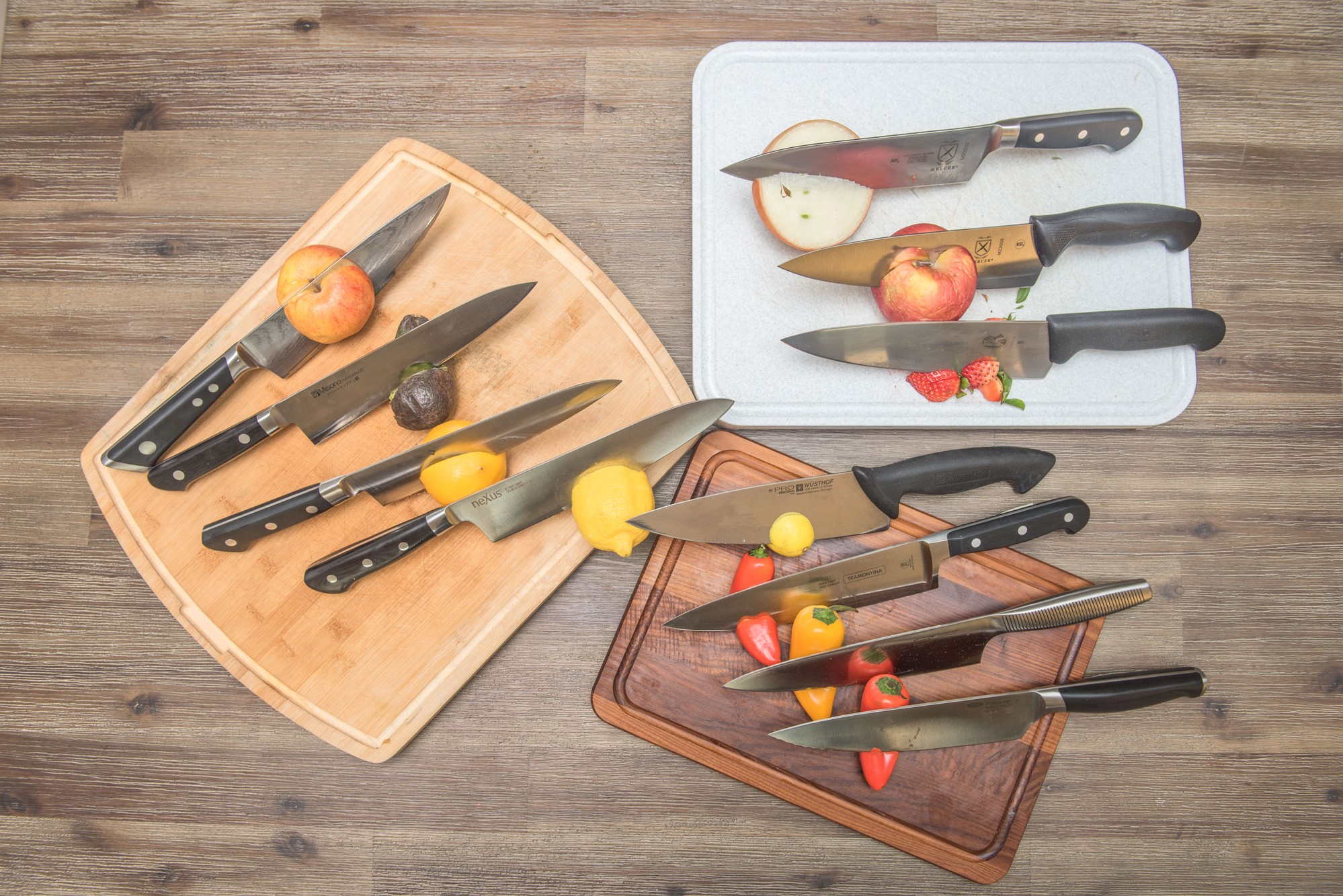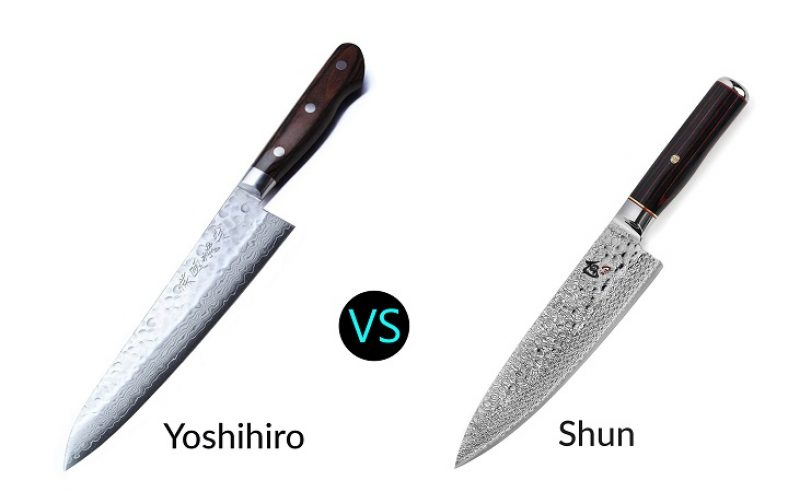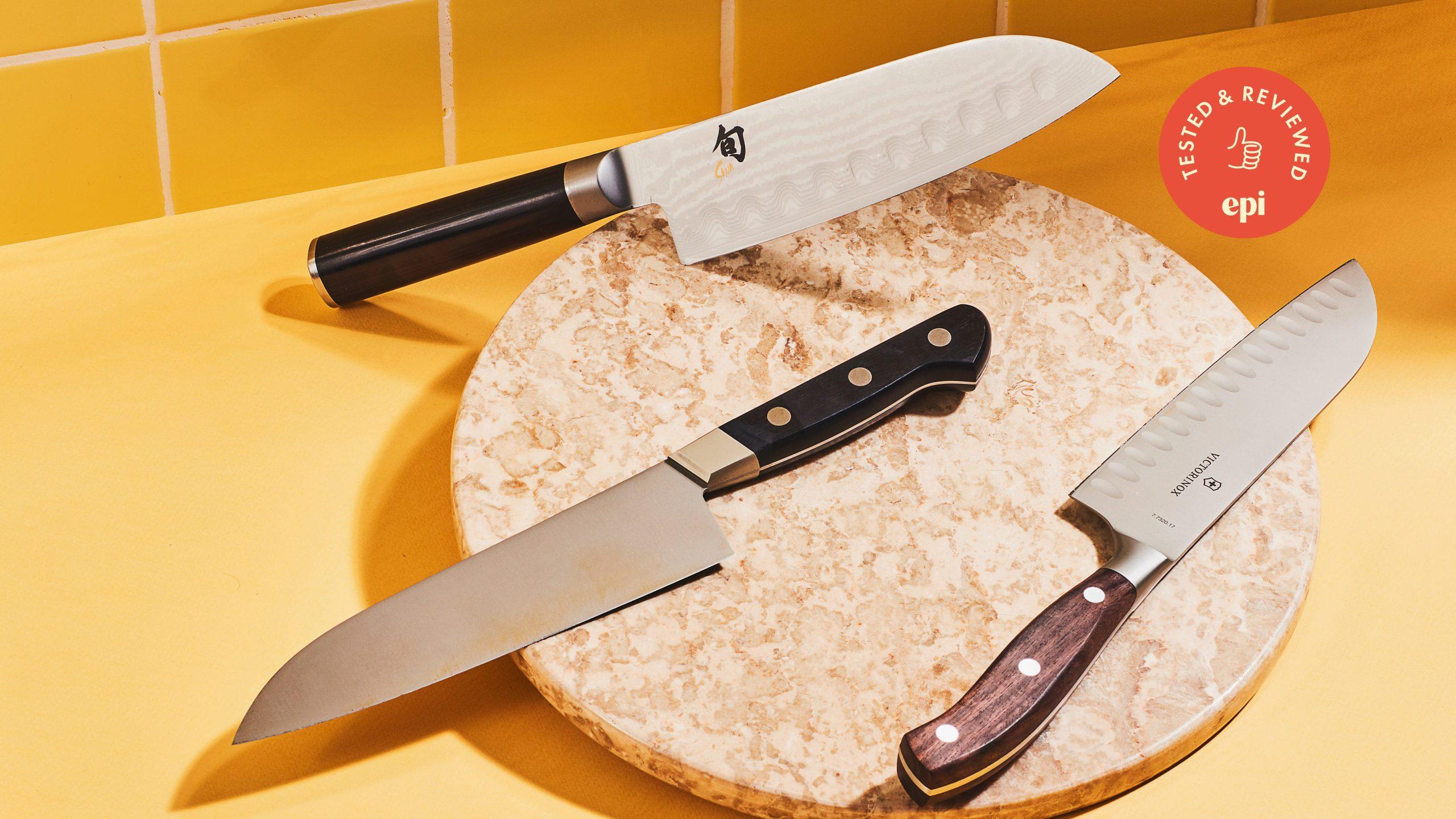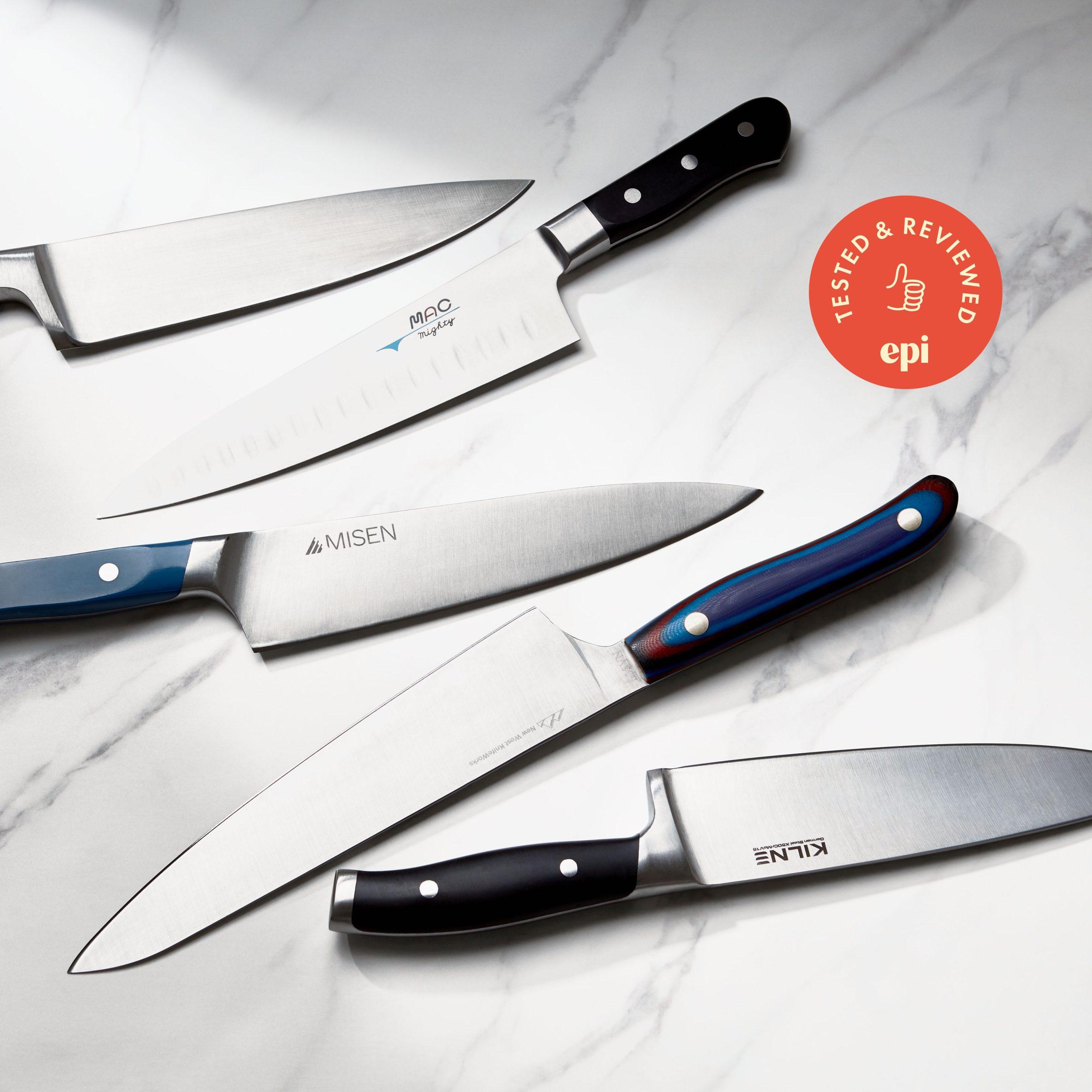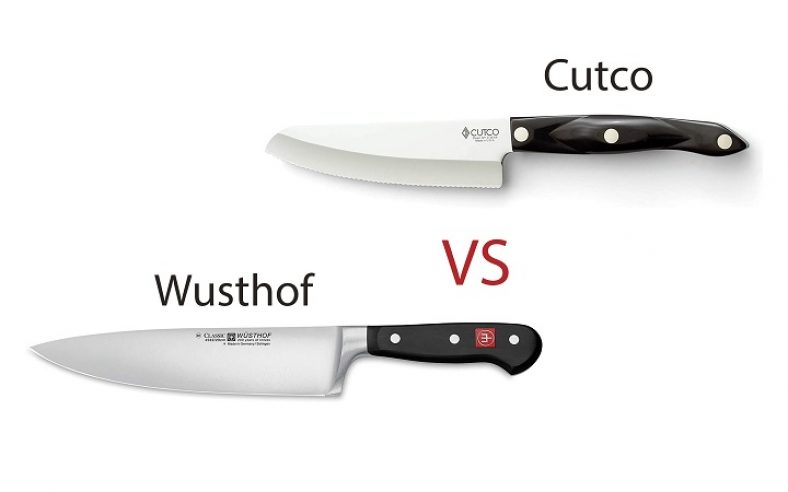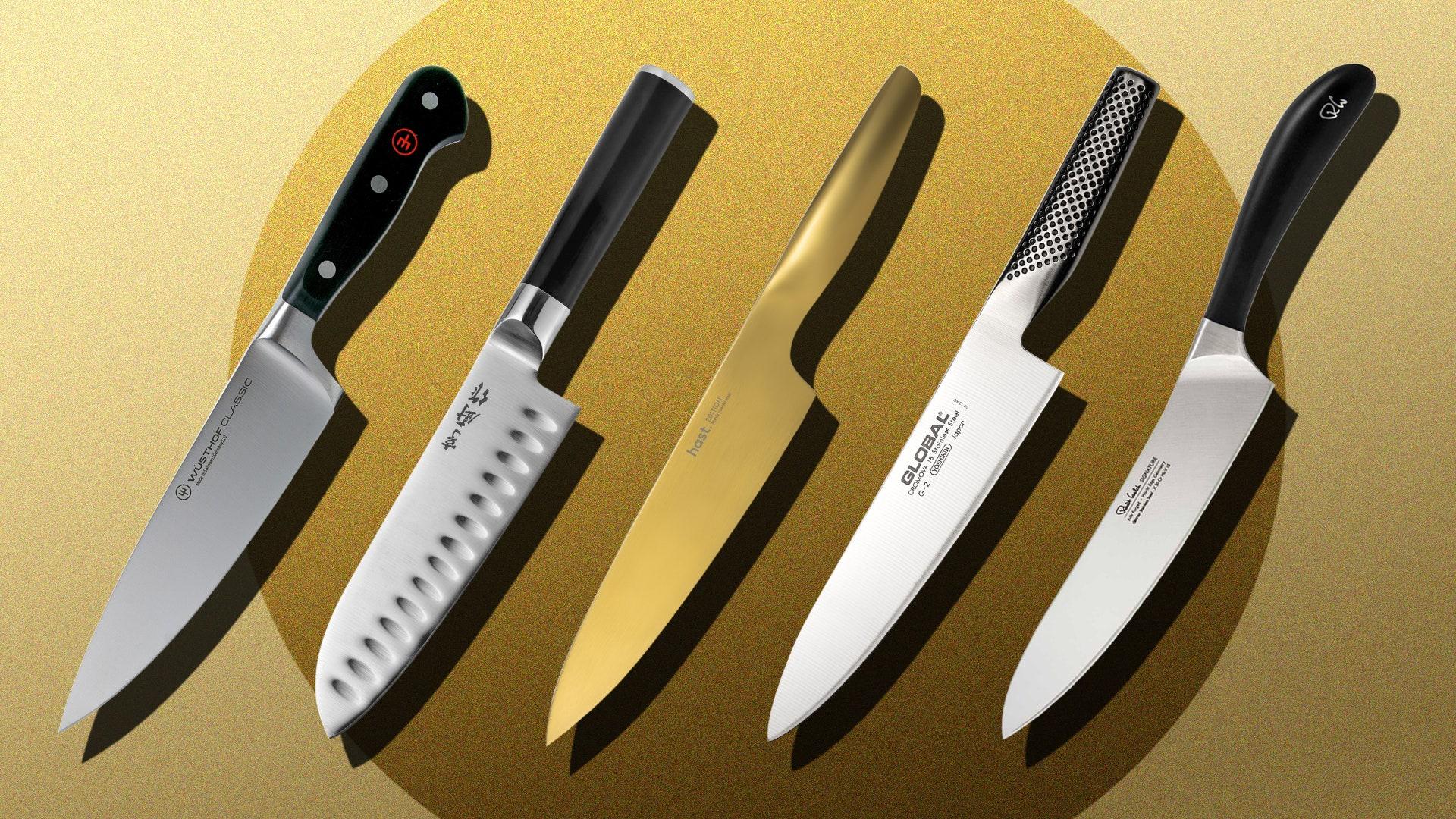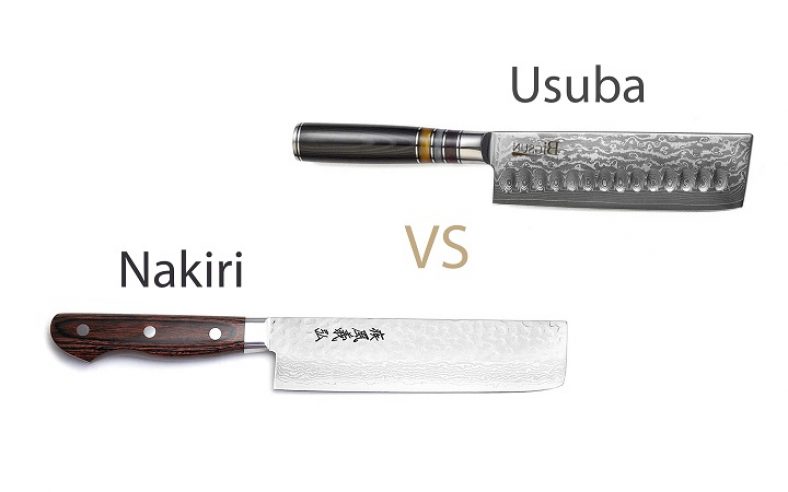Knife reviews provide valuable insight to buyers looking for information on knives. In this article, we will dive deeper into the world of knife reviews by discussing the importance of reading knife reviews, how to read them, and what to look for in a good review.
Additionally, we will provide some top-rated knives and their respective reviews. Whether you are a chef looking for a new kitchen knife or a woodsman looking for a tactical knife, we have got you covered. Keep reading to discover the best knife reviews and find the perfect knife for your needs.

Credit: www.techgearlab.com
Considerations When Choosing Knives
Material: Stainless Steel Vs Carbon Steel
When selecting a knife, the material used to create the blade is a crucial consideration. Two of the most common materials used for knife-making are stainless steel and carbon steel. Here are the key points to keep in mind about each of these materials:
- Stainless steel blades are resistant to rust and corrosion, which makes them easy to maintain. They also require less maintenance than carbon steel blades.
- Carbon steel blades are sharper and hold their edge for longer periods. However, they require more maintenance than stainless steel blades and can rust or corrode if not properly taken care of.
- Ultimately, the choice between stainless steel and carbon steel comes down to personal preference and how much maintenance you are willing to undertake.
Type Of Knife: Chef’S Knife, Utility Knife, Paring Knife, Etc.
Different types of knives serve various purposes in the kitchen. When selecting a knife, it’s crucial to consider what type of knife you need for the task at hand. Here are some of the most commonly used types of knives:
- Chef’s knife: This is the workhorse of the kitchen and is used for chopping, slicing, and dicing. Chef’s knives typically have blades that are between six and twelve inches long.
- Utility knife: A utility knife is an all-purpose knife that is smaller than a chef’s knife but larger than a paring knife. It’s perfect for tasks that require more precision than a chef’s knife can provide.
- Paring knife: Paring knives are small, light-weight knives that are ideal for tasks like peeling and coring fruits and vegetables.
Handle Design: Wooden Vs Plastic Vs Metal
The handle of a knife affects how comfortable and safe it is to use. There are three main types of handle materials: wooden, plastic, and metal. Here are key points to keep in mind for each material:
- Wooden handles are comfortable to hold and provide a traditional look. However, they require more maintenance than other materials, as they can be affected by moisture.
- Plastic handles are comfortable and easy to maintain. They are also lightweight, making them perfect for tasks that require agility.
- Metal handles are durable and easy to maintain. They typically have a textured surface, which provides a good grip.
Remember, the handle material you choose will ultimately depend on your personal preference. The most important factor is whether or not you find the handle comfortable to use.
Top Picks For Chef’S Knives
Explanation Of Why The Chef’S Knife Is An Essential Tool In The Kitchen
A good chef’s knife is a staple tool for any cook, professional or amateur. It’s versatile and can be used for a multitude of tasks in the kitchen, from chopping vegetables to slicing meat. Here are some reasons why the chef’s knife is an essential tool in the kitchen:
- The blade is typically 8-10 inches long, making it comfortable to hold and giving you a good amount of control when cutting.
- The shape of the blade is curved, allowing you to smoothly rock the knife back and forth while chopping or mincing.
- The knife is sharp and can easily cut through tough ingredients like meat and root vegetables.
- It saves time and effort in the kitchen by allowing you to do multiple tasks with just one knife.
- A good quality chef’s knife will last for years if maintained properly.
Review Of Top-Rated Chef’S Knives, With Pros And Cons Of Each
Now that we’ve established why the chef’s knife is such a crucial tool in the kitchen, let’s take a look at some of the top-rated options on the market. Keep in mind that everyone has differing preferences when it comes to knives, so what works for one person may not work for another.
That said, here are some of the best chef’s knives available today:
1. Wüsthof Classic Chef’S Knife
- Pros:
- High-carbon stainless steel blade is sharp and durable.
- Full tang construction provides balance and control.
- Triple-riveted handle is comfortable to grip.
- Cons:
- Expensive compared to other options.
- Blade may be too heavy for some users.
2. Global G-2 Chef’S Knife
- Pros:
- Lightweight, thin blade allows for precise cutting.
- Unique handle design is comfortable and provides a secure grip.
- Stainless steel construction is rust-resistant.
- Cons:
- Not suitable for heavy-duty tasks like cutting through bones.
- Blade may be too short for some users.
3. Victorinox Fibrox Pro Chef’S Knife
- Pros:
- Affordable option for those on a budget.
- Ergonomic handle is slip-resistant and comfortable.
- Blade is sharp and can handle a variety of kitchen tasks.
- Cons:
- Blade may need frequent sharpening.
- Some users find the handle too lightweight.
4. Shun Classic Chef’S Knife
- Pros:
- Beautiful, damascus-clad blade that is both sharp and durable.
- D-shaped handle is comfortable and provides a secure grip.
- Made in japan with high-quality materials.
- Cons:
- Expensive compared to other options.
- Blade may require more maintenance than other knives.
There you have it, some of the top-rated chef’s knives available on the market. Whether you’re a professional chef or an at-home cook, a good quality chef’s knife is a necessary tool in the kitchen. Consider your budget and preferences when selecting the right one for you.
Top Picks For Specialty Knives
Review Of Lesser-Known Knives That Are Still Essential For A Flawless Cooking Experience, Such As A Boning Knife Or A Serrated Knife:
When it comes to specialty knives, the ones that do not get as much attention as the usual ones are the boning and serrated knives. The reason why they are called specialty knives is because they each have a particular use, but are not needed frequently for everyday cooking.
Here is a rundown on some of the lesser-known knives that are still essential for a flawless kitchen experience.
- The boning knife: A thin, long, and pointed knife with a flexible blade, which is perfect for trimming meat. It is also excellent for cutting through tendons, ligaments, or cartilage from the meat.
- The serrated knife: This knife is a blessing for slicing through bread without squishing it, but it also comes in handy for cutting fruits and vegetables that have a tough exterior, such as tomatoes or citrus.
Explanation Of When And Why To Use Each Type Of Specialty Knife:
If you do not have a complete understanding of each knife’s purpose, you might end up using the wrong one, which might ruin your cooking experience. Therefore, here is an explanation of when and why you must use each type of specialty knife.
- The boning knife: Use a boning knife when you have a piece of meat with bones that need to be removed before cooking. It is ideal for deboning poultry, meat, and fish.
- The serrated knife: A serrated knife’s jagged edge makes it easy to cut through anything with a hard exterior and a soft interior. It is perfect for slicing through bread, tomatoes, and citrus fruits.
Being equipped with the appropriate set of knives increases your productivity and ensures that your cooking experience is seamless. A comprehensive understanding of each knife’s use is critical to making an informed choice when selecting the right knife for your needs.
Maintaining Your Knives
Keeping your knives in top-notch condition is not only crucial for better performance, but also for your safety. Proper maintenance is the key to ensuring that your knives remain sharp and rust-free. Here are some essential tips to help you maintain your kitchen knives:
Explanation Of The Importance Of Proper Knife Maintenance
- Proper maintenance helps you to keep your knives sharp and effective.
- Maintaining your knives also extends their lifespan and saves you the cost of replacing them frequently.
- A well-maintained knife significantly reduces the risk of accidents in the kitchen.
Tips For Cleaning And Sharpening Your Knives To Extend Their Lifespan
Cleaning your knife:
- Clean your knife after every use and dry it thoroughly to prevent rust.
- Use a mild detergent and warm water to wash your knives.
- Never put your knives in the dishwasher as it can damage the blade’s edge and cause corrosion.
Sharpening your knife:
- Use a honing steel or sharpening stone to sharpen your knife regularly.
- Sharpening helps maintain the blade’s edge, improving its cutting performance.
- Hold the blade at the correct angle while sharpening.
- Always clean your sharpening tool after use to keep it in good condition.
By following these basic tips for knife maintenance, not only will your knives be performing optimally, but you will also have them for a longer period of time. Remember to clean and sharpen your knives after every use, invest in good quality sharpening tools and always handle your knives with care.
Frequently Asked Questions Of Knife Reviews
What Should I Look For In A Good Knife?
A good knife should have a sharp blade, comfortable handle, and good balance. Consider its purpose, size, and materials.
What Are The Different Types Of Knives?
There are several types of knives, including chef’s knives, paring knives, serrated knives, and utility knives. Each has a specific purpose.
How Do I Maintain My Knife?
Proper maintenance includes cleaning, storing, and sharpening your knife regularly. Hand wash with mild soap and dry immediately. Use recommended sharpeners.
How Long Will My Knife Last?
With proper maintenance, your knife can last for many years. However, constant use, exposure to extreme conditions, and poor maintenance can shorten its lifespan.
What Is The Best Material For A Knife Blade?
The best material for a knife blade depends on its purpose. Stainless steel, high-carbon steel, and damascus steel are popular materials. Choose according to your preferences.
Conclusion
After reviewing a variety of different knives, it’s clear that there are many great options available for those in search of a reliable kitchen tool. From classic blades to modern designs, knife enthusiasts have a vast selection to choose from.
Whether you’re a professional chef or a home cook, investing in a quality knife is essential for achieving great results in the kitchen. Remember, it’s important to consider factors like blade material, handle grip, and overall design when choosing the perfect knife for you.
By taking the time to do your research and carefully considering your needs, you can pick the perfect knife to help you navigate your way through your culinary endeavors. With the right knife in hand, you can craft beautiful meals that will delight your friends and family for years to come.

